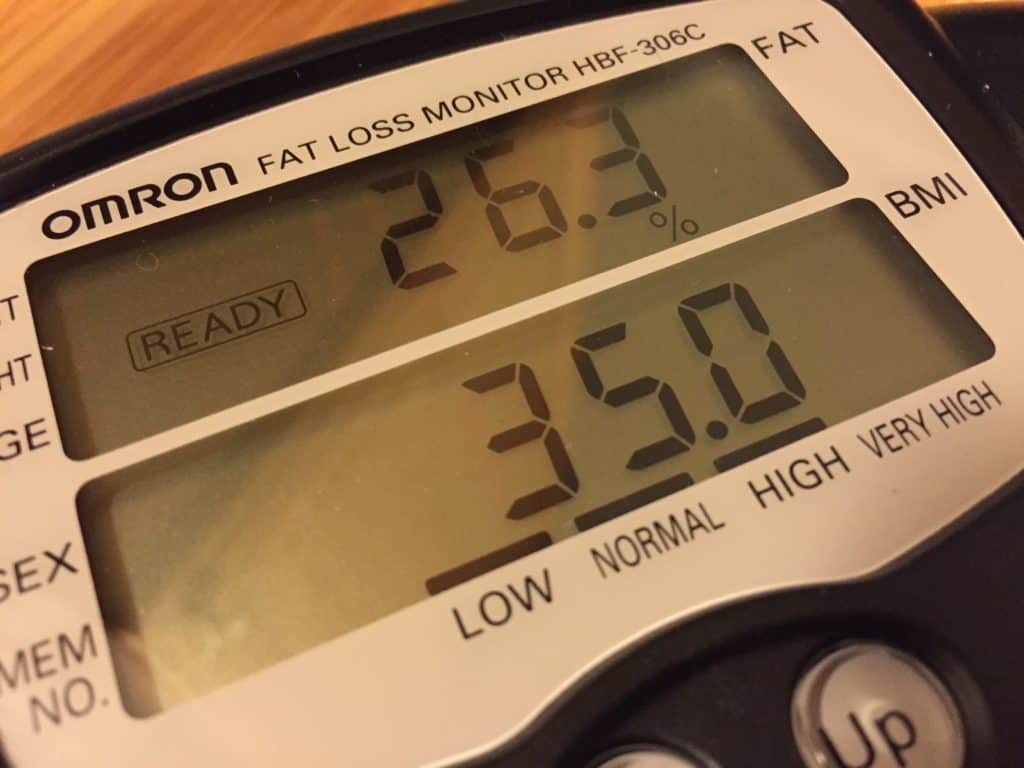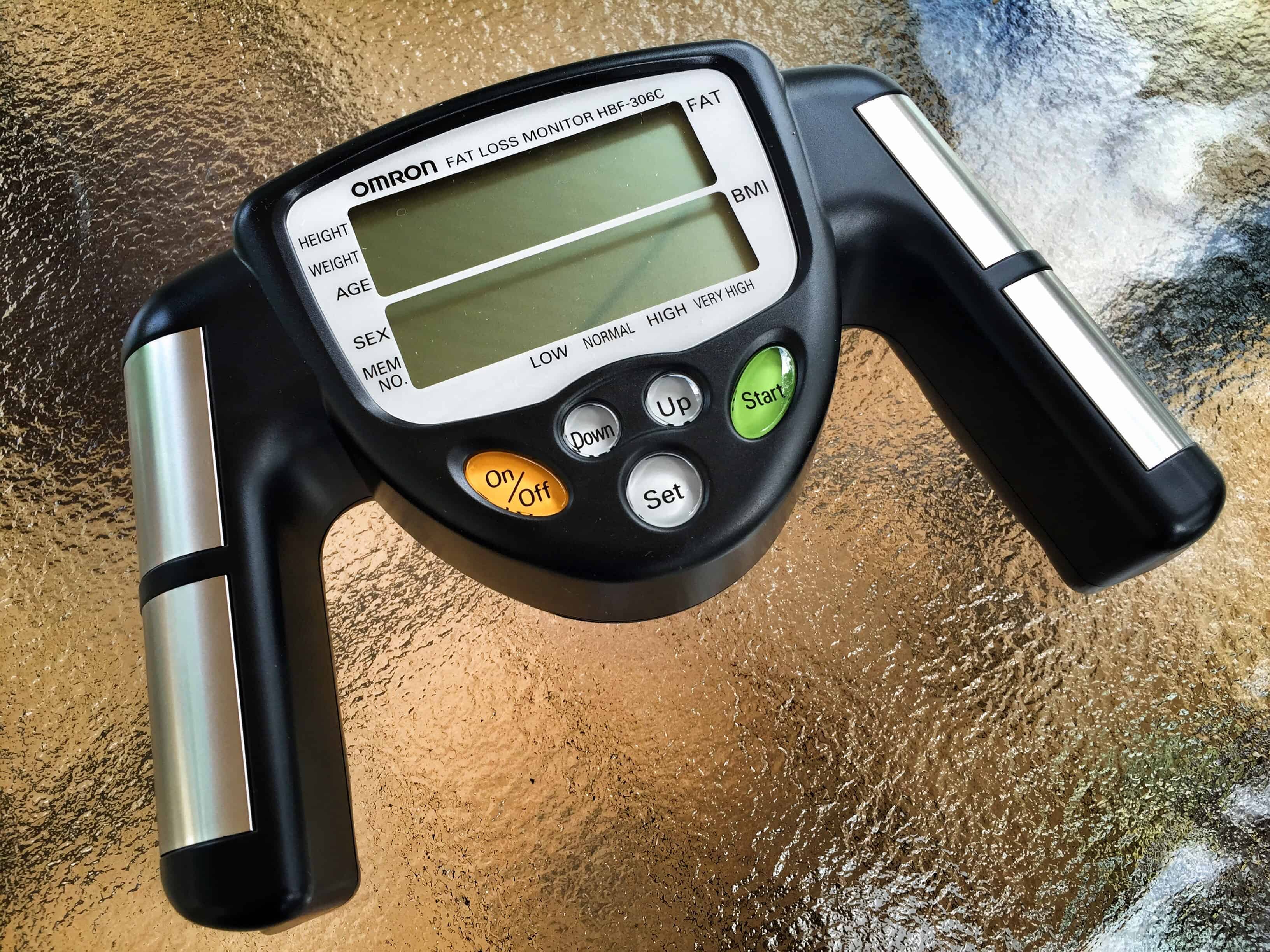A couple of weeks ago I received an email from Tim, a listener of the Slimming Down Dad Podcast. We got to talking about a variety of things and traded email back and forth. At one point Tim mentioned picking up a body fat monitor and I was very curious.
When I first started my weight loss journey I was adamant about taking progress photos and body measurements. Each week I would have my wife take embarrassing photos just so that I could log them and check my progress over time.
As my journey progressed, and my wife’s schedule grew hectic, those photos and measurements became less of a priority. It has been quite a while since I’ve taken progress photos, however, I’ve always been interested in monitoring my body fat percentage.
Back in my high school wrestling days we used to use body fat calipers to take several measurements around the body, then use a mathematical formula to get the final results. I thought busting out a set of calipers might be asking too much of my wife, so I haven’t given it much thought.
Tim’s email had me curious. Could a little handheld electronic device replace calipers and mathematical formulas? I threw caution to the wind and placed an order through Amazon for the Omron Fat Loss Monitor . I’ve spent $30 or worse things, why not give this one a shot?
. I’ve spent $30 or worse things, why not give this one a shot?
I’ve had my Omron Fat Loss Monitor for about a week and a half now and I don’t know what to think just yet. I’ve read several reviews that say that the device can be severely inaccurate based on the information you provide. For example, tell it you are 18 years old and a healthy weight and you will see good results. If the same person were to tell the device they were 54 the percentage would be radically different.
Despite the odd reporting, reviews seem to be favorable for middle-aged average people. Although I don’t like to consider myself middle-aged at 33 years old, I felt that I would fall into the average category.

The first time I used the Omron Fat Loss Monitor (first thing in the morning with an empty bladder) it reported that my body fat was 27.6% on July 31st. Accurate or not, as long as the monitor is consistent in the way it measures, that should give me a solid point of reference.
Since my lowest weight day seems to be Wednesday (I can’t explain why, I just seem to weight-in best on Wednesdays) I gave the Omron Fat Loss Monitor another shot five days later. My second recording was 26.3% under the same circumstances.
The second reading has left me a bit skeptical. According to the device, over a period of five days, despite my weight not changing, there was a change of 1.3% body fat. To put that in a different perspective, my initial reading translates to 66.08 pounds of body fat. My second reading translates to 62.96 pounds of body fat. If I’m understanding this correctly, the device says that I’ve lost 3.12 pounds of body fat. Since the scale hasn’t moved I can only assume that 3.12 pounds has to have changed to lean body mass (muscle) or water retention of some sort.

Since I’ve been using the device for a very short time, I’ll continue to use it and track the results over time. Perhaps I’ll revisit with a post like this one in about a month and see if the numbers still leave me skeptical.
Perhaps you have a better understanding of how devices like these work. Is it possible that the monitor is correct and I have lost 3.12 pounds of fat in only 5 days? If that is the case, shouldn’t I have seen some sort of change on the scale? If you were in my position, how would you use a device like this to track progress?
2 thoughts on “First Impressions of the Omron Fat Loss Monitor”
Comments are closed.
Recent Posts
From Group Ride Roasts to Real Life: My YouTube Channel Update
Well, my lovelies (I realize that sounds weird but at this point I need to lean into it), it's time for some real talk about where I've been and what's been happening behind the scenes at Walt in...
Reconnecting with friends, exploring scenic Pennsylvania back roads, and enjoying the simple pleasure of two wheels Getting the Band Back Together Today was a pretty special day in the...


I have been a full time Fitness Professional for 25 years. Most body fat analysis is inaccurate. The best methods are the Dexa Scan (like a CT Scan) or the bod pod which uses air displacement. Hydrostatic testing and calipers are subject to operator error. Keeping that in mind, electronic impedance devices are consistently inaccurate, but will almost always have the same error factor. If you use it under the same circumstances regularly you can track if you gain or lose fat. Don’t use it as a gospel reading. If you have any other questions or need advice feel free to ask
Wayne,
I’m okay with it being inaccurate but consistency is key. It sounds like it will do exactly what I hoped it would – allow me to track body-fat gains/losses over time.
I was under the impression that hydrostatic testing was sort of like the gold standard of testing. While doing some research last night I came across info on Dexa Scans and the Bod Pod. Both look very interesting.
Thanks